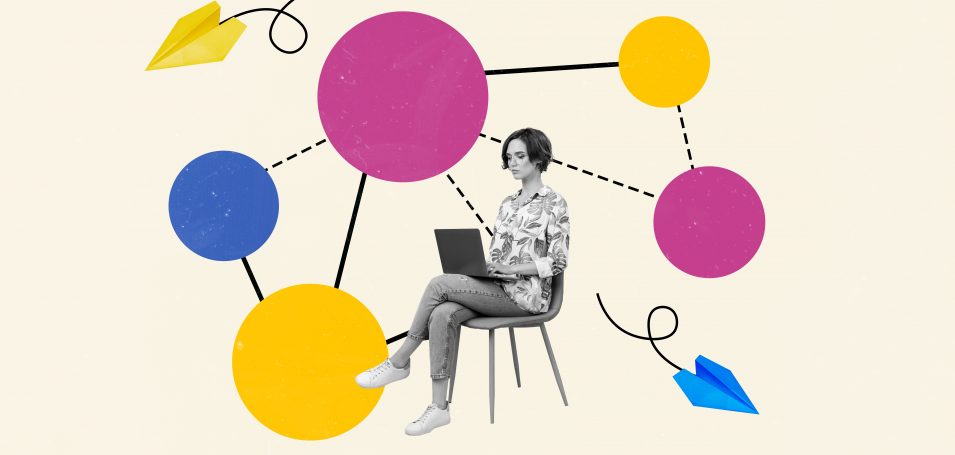Customer retention is important in every industry, especially in the dynamic world of Software-as-a-Service (SaaS). Imagine this: Keeping your current customers engaged and satisfied is not only smart but also significantly more cost-effective than chasing after new ones.
In fact, acquiring new customers can set you back by as much as seven times more. Emphasizing retention can unlock tremendous value and propel your business to new heights.
For SaaS firms, customer education efforts help users get the most value from a product by ensuring that they can use all the features they’re paying for. They also help them realize what features they might like to pay for but aren’t (yet) able to. In this way, customer retention models optimize adoption, churn, and customer loyalty.
Reap these benefits via onboarding, in-app education, and ongoing educational resources for in-person, remote, and hybrid learning models.
Why Customer Education Matters for SaaS Retention
While some user turnaround is inevitable, excessive churn is often caused by existing customers not understanding how to use a product. According to a Forbes overview of SaaS churn, the #1 way to avoid it is to ensure that customers know how to derive value from goods and services effectively.
Customer education addresses this pain point directly by teaching users the ins and outs of your platform. Baseline modules should cover the fundamentals every user needs, and these should be followed up with specialized resources and instruction based on a given user’s needs and use case. A successful program reduces support tickets, increases customer engagement, and drives sustained customer satisfaction.
An effective customer education team supports successful SaaS customer journeys. By providing comprehensive onboarding and ongoing training, these teams ensure that customers can quickly adapt to and maximize their software usage.
Best Practices for Implementing Customer Education for Retention
Creating and implementing a customer education strategy is one of the best ways for SaaS firms to shore up retention and grow alongside their clients. However, it takes a careful, intentional approach to craft, deploy, and maintain such a plan long-term.
Some best practices for optimizing customer education in SaaS are:
- Creating personalized, tailored learning paths for users
- Utilizing progressive learning models to avoid overload
- Incorporating engagement at all levels with gamification
- Leveraging remote, on-premise, and hybrid learning modalities
- Measuring efficacy and impact and making adjustments regularly
Let’s take a closer look at each.
Create Personalized Learning Paths
Not all users learn the same way—or need the same information. Personalized learning paths help ensure that each user gets the right level of educational content without feeling overwhelmed or stuck in the material they already know.
At the simplest level, you can divide users into administrators vs. regular users or beginners vs. advanced users. From there, let them self-select into different groups based on their experience or offer a quick assessment to guide them to the right content.
The goal? Give learners the help they need while letting more experienced users skip ahead.
Support teams and tiered resources can also make a huge difference in keeping learners engaged and on track.
Use Progressive Learning Models
Nobody wants to undergo hours of training and learning processes just to get started. The best approach to a successful customer education program is to break things down into smaller, digestible steps that build on each other.
Think of it like leveling up in a game—start with the basics (like a quick onboarding module), then let users choose their own adventure. Instead of dumping all the advanced features into one big info dump, space them out into separate, focused modules. That way, users can easily find what they need without feeling overwhelmed.
Make Learning Fun With Gamification
Let’s be real—learning can feel like a chore. Gamification and customer education initiatives change that. Adding things like quizzes, badges, leaderboards, and progress tracking turns training into a more interactive experience.
A little friendly competition? Even better.
Studies show that gamification works, but it’s not a one-size-fits-all approach. The trick is to tailor it to your audience—some users love a challenge, while others just want to track progress at their own pace. The key is to keep it engaging, rewarding, and fun.
Leverage Hybrid Learning for Flexibility
With more companies balancing remote and in-office work, customer education goals need to be just as flexible. Users should be able to learn anytime, anywhere—at their desks or on the go.
That’s why SaaS companies are in a unique position to apply their own principles to education. Think cloud-based scalability, seamless user experience, and smart automation. By building hybrid-friendly training, you’re not just teaching customers—you’re making their lives easier.
Measure, Optimize, and Keep Evolving
A great customer training program is never “one and done.” You need to track progress, listen to feedback, and keep improving.
Some key metrics to watch:
- Feature adoption: Are users actually using the tools you’re teaching them about?
- Retention rates: Do educated users stick around longer?
- Customer satisfaction: What’s the overall vibe—are users happy with their learning experience?
Use these insights to tweak content, introduce new modules, and keep things fresh. Some experimentation can prevent stagnation and keep engagement high even if things seem to work.
Real-World Examples of SaaS Companies Driving Retention With Customer Education
Effective customer education in SaaS informs users and gets them excited to use your app or platform. Through engagement and targeted learning, users may even become your most zealous advocates and good-faith word-of-mouth advertisers.
Some examples of effective customer education programs in SaaS are:
- ArrowStream: Thought Industries helped the food service supply chain management giant optimize its customer onboarding and training program by migrating to a blended online environment, reducing training hours by 74%.
- Seismic: Thought Industries partnered with the leading sales enablement and marketing orchestration provider to streamline customer onboarding and training, leading to significant savings across over 15,000 completed courses.
By leveraging educational tools like AI-driven onboarding processes, video tutorials, and customer certification programs, you’ll turn your learners into loyal customers and loyal customers into advocates.
The Role of Thought Industries in SaaS Customer Education
Thought Industries powers impactful customer education for SaaS companies of all kinds and sizes with flexible, scalable modules and unparalleled customer support.
We provide a flexible platform you can use to optimize learning to your users’ needs.
We know how important retention is to maintaining and growing a client base. We believe that informed customers become loyal customers. Our platform will help you engage your client base, address gaps in understanding, and empower them to be power users of your products.
Our customer education credentials enable robust certification and support for any SaaS customer need, and our experience in the tech and software industries helps us anticipate and alleviate your concerns proactively.
Train to Retain
Ultimately, customer education in SaaS helps customers see value faster, engage with products more deeply, and stay subscribed for longer. As a corollary, educated customers are better targets for up-and-cross-selling, and they are often the best unofficial spokespeople for word-of-mouth advertising.
It’s a win-win all around.
Investing in structured education programs is essential for long-term retention. The best way to optimize your learning program is to partner with an educational innovator like Thought Industries. Our platform gives SaaS companies powerful tools to provide customer education content while offering flexible support to learners. Get in touch today to start implementing one of these tried-and-true strategies.


